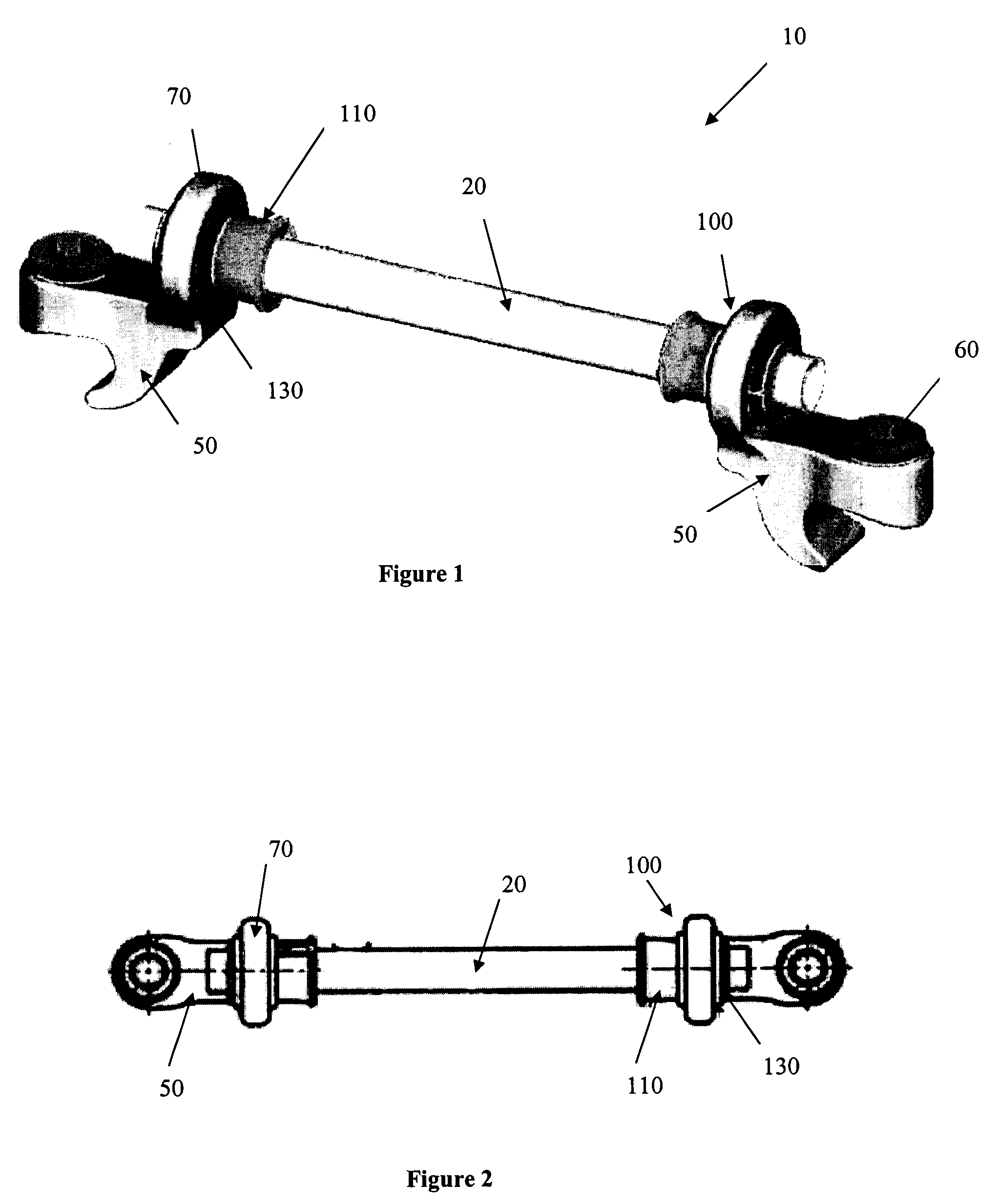Linking transconnector for coupling spinal rods
a transconnector and spinal rod technology, applied in the field of spinal rod fixation devices, can solve the problems of soft tissue trauma, difficulty in providing surgeons with one or more difficulties, and rarely so geometrically aligned
- Summary
- Abstract
- Description
- Claims
- Application Information
AI Technical Summary
Benefits of technology
Problems solved by technology
Method used
Image
Examples
Embodiment Construction
[0026] For the purposes of promoting an understanding of the principles of the invention, reference will now be made to an exemplary, non-limiting embodiment illustrated in the figures and specific language will be used to describe the same. It will nevertheless be understood that no limitation of the scope of the invention is hereby intended, such alterations and further modifications, and such further applications of the principles of the invention as illustrated herein being contemplated as would normally occur to one skilled in the art to which the invention relates.
[0027] The Linking Transconnector 10 may be used for coupling a first longitudinal spinal rod to a second longitudinal spinal rod. The first and second longitudinal spinal rods may be cylindrical rods, rectangular bars, plates, or any other device appropriate for use in connecting two or more adjacent vertebral bodies to facilitate spinal fixation. For the sake of simplicity, the term “rod” will be used herein to re...
PUM
 Login to View More
Login to View More Abstract
Description
Claims
Application Information
 Login to View More
Login to View More - R&D
- Intellectual Property
- Life Sciences
- Materials
- Tech Scout
- Unparalleled Data Quality
- Higher Quality Content
- 60% Fewer Hallucinations
Browse by: Latest US Patents, China's latest patents, Technical Efficacy Thesaurus, Application Domain, Technology Topic, Popular Technical Reports.
© 2025 PatSnap. All rights reserved.Legal|Privacy policy|Modern Slavery Act Transparency Statement|Sitemap|About US| Contact US: help@patsnap.com



